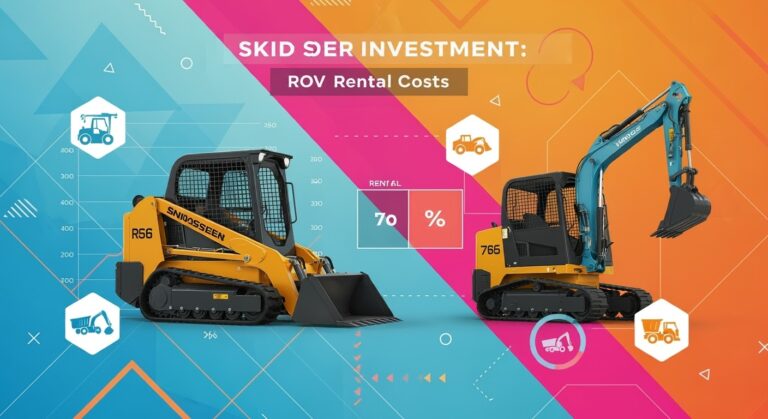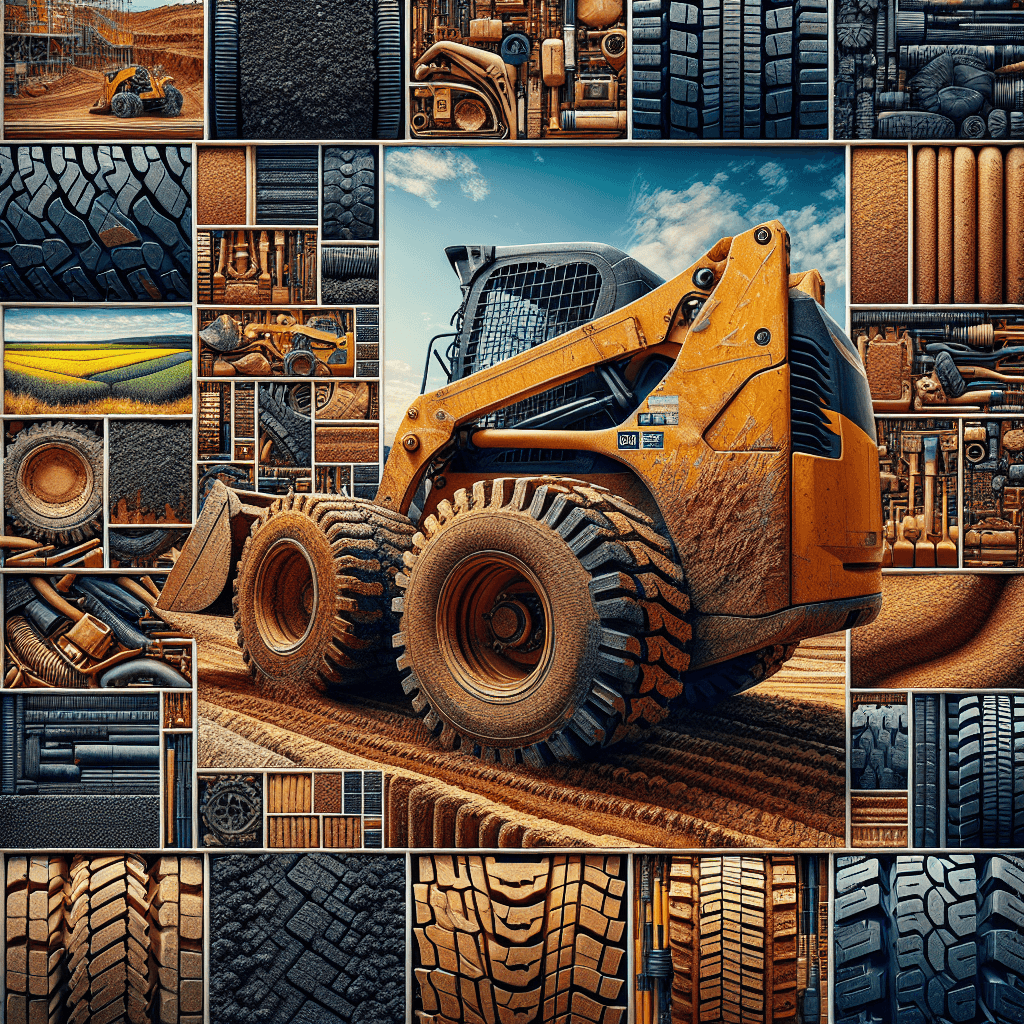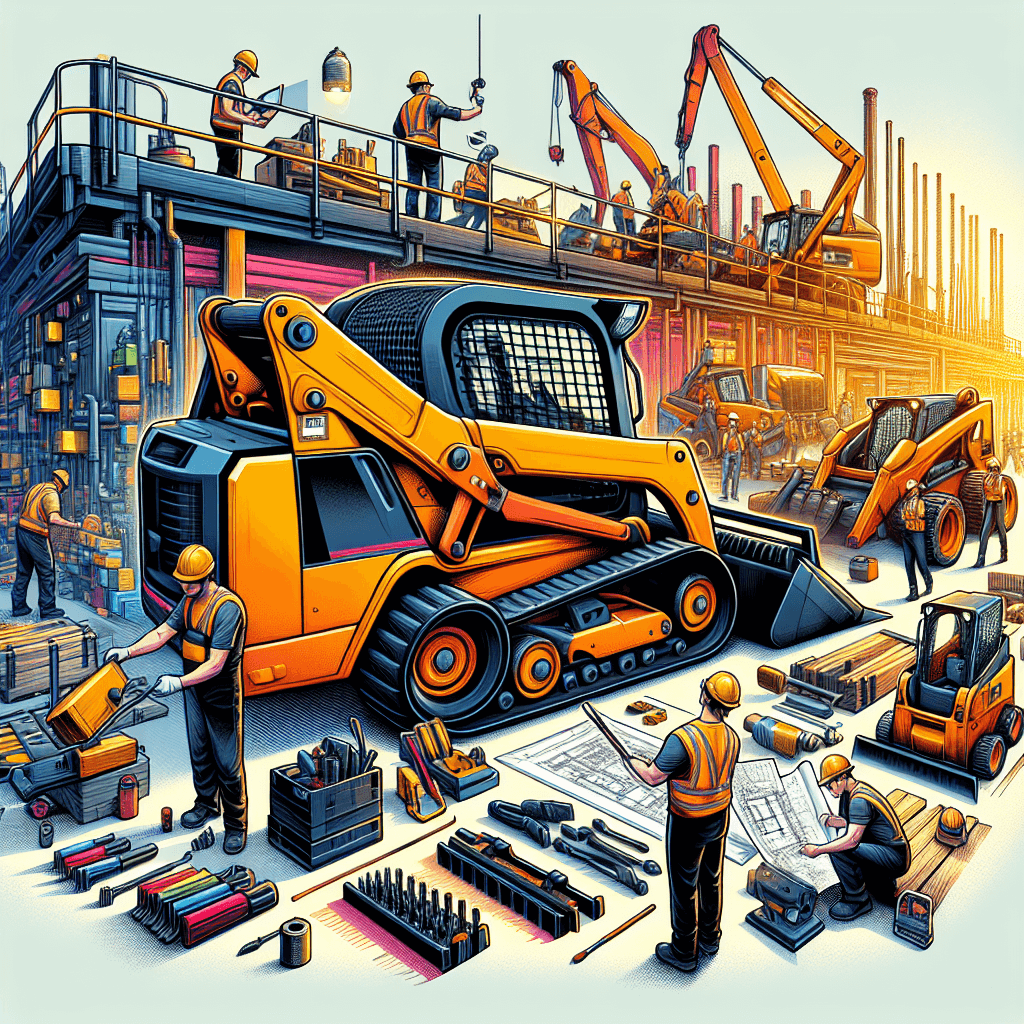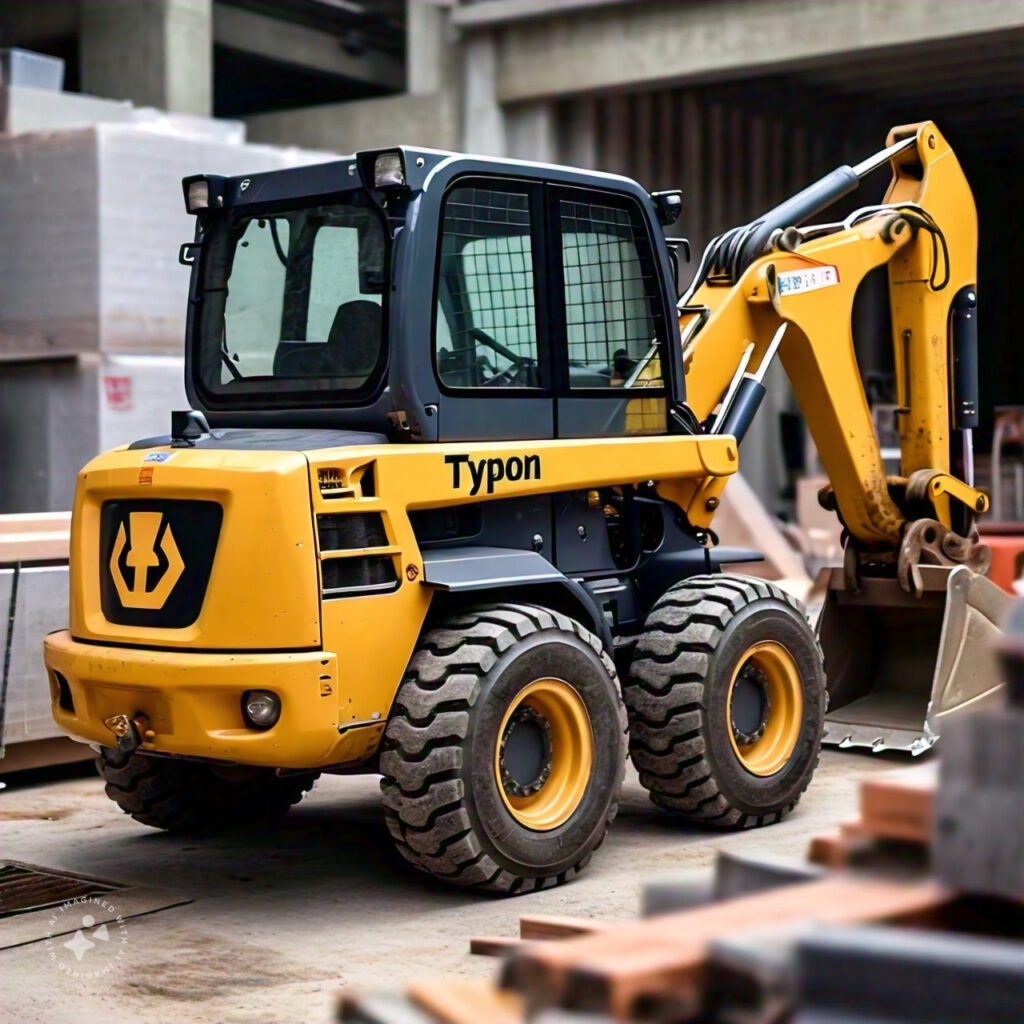Small Contractor’s Handbook: Understanding the Importance of Skid Steer Investments
Have you recently taken the step from an individual worker to launching a small contracting business with the intention of purchasing your premier equipment? You may be at a point in your business that the acquisition of a skid steer is what gives you the ‘Aha’ moment. Skid loaders are all-around power tools and have the capability to give you an increased level of productivity, with a lifting capacity of 1,250 up to 2,700 pounds. However, knowing their total value is not simply about that specification.
Suppose you decide to grow your equipment resources or you are just starting to buy the equipment; this guide will help you through the process, so the choice, you make is both well-informed and in alignment with your business budget and goals. Let us focus on everything about the purchase of a skid steer loader.
Key Points:
- Skid steer loaders are a general class of tools that can move from one location to another and are capable of handling a variety of earth-moving tasks. They can lift capacities of 1,250 to 2,700 pounds, which makes them suitable for different sites and applications.
- The decision to purchase a new or a used skid loader is reliant on your budget, project requirements, and company goals for a long time. Definitely, each choice has its own compelling reasons and trade-offs.
Innovation is the key:
- At present, advanced technology has enabled the manufacture of a whole cluster of attachments to be used in self-cleaning operations as well as in the renovation of a single machine or in the process of working more effectively by switching the accessories for the next job. Snow removal, trench digging, to name a few, are the multiple actions where skid steer loader can carry out of.
- Small size and that are easy to handle, keeping in mind the kind of equipment from skid steers, which will bring several features suitable for the purpose of the job that other conventional equipment is not. Thus, this is an advantage for the construction equipment.
- Key parameters like equipment utilization rate, maintenance costs, and the possibility of extending services through different implements are the main factors that influence ROI.
Core Features and Capabilities
Basic Structure and Design Elements
The beauty of a skid steer loader is that it is a small vehicle that can perform really well in the field of compact spaces. At its core is an operator cabin that is not only comfortable but also built for the purpose of safety in mind and in the same time it gives the perfect vision involved without any blocking.
Core Features Driving Efficiency
- Compact Design: Go through tight construction sites with no effort.
- Hydraulic Power: 17 to 25 gallons per minute flow rates are sufficient for fast and easy swapping of attachments.
The nuts and bolts of the construction of this machine are the pair of supporting and loading mechanism that are on both sides of the cab and are manipulated by the heaviest of the lifting arms. All the necessary power can be gathered in the most competent parts other than the cabin that is the first to be subjected to the brutal forces of lifting, ensuring the machine’s compactness. The setup allows for the arms to be located in the perfect spot and, at the same time, ease the balance and stability of the aircraft throughout the whole process.
Performance Specifications
As for performance, skid steers surely are no exception in spite of being compact, their competence is enormous. Most models offer lifting capacities of between 1,250 and 2,700 pounds, which enables a wide range of tasks to be performed. The hydraulic system not only moves the arms but also makes the quick attachment changes possible, thus delivering versatility.
- Lifting Capacity: Manage 1,250–2,700 pounds, which is powerful for the job at hand.
- 360-Degree Maneuverability: Precise in corners with a minimum turning radius of zero.
With the unique steering system of the machine that has zero-turn capability, it can turn around 360 degrees in place, which makes it very maneuverable in tight spaces. This steering system in combination with the small size of the machine allows operators to work very efficiently in spaces where it is not possible to access with larger machinery.
The range of power output is usually from 50 to 70 horsepower, which is good enough for almost all small to medium-sized projects.
At these rates, the hydraulic flow usually goes between 17-25 gallons per minute, so operators can be sure that the attachments will work well, from buckets to augers. This is the feature most commonly found, even in large equipment of this kind.
Characterized by the presence of such essentials as an enclosed operator cab, dual lifting arms, and the compatible hydraulic systems that allow the machines to be used with ease in the narrowest spaces, skid steers represent a harmonious integration of space efficiency and performance.
Types of Skid Steers for Different Needs
Compact Models
Compact skid stepper models are the standout options among variation where one can find a skid loader; as they guarantee efficient operation in narrow spaces.
A compact track loader variation in this category offers greater stability and reduced ground pressure, ideal for operation on sensitive surfaces or soft soils. These machines are good at garden preparation, small demolition, and material handling of light weight.
- Suitable For: Soft terrain, landscaping, and indoor projects.
- Features: Lower ground pressure, better stability, and year-round usability.
Medium-Sized Models
Medium-size skid steers stand in the middle ground between the small of the very small-sized and the large of the very large-sized models which have enough power and are such that they can be easily maneuvered. These machines can handle up to 1,500-2,200 pounds, and they, in addition, to fuelling economy, ensure that the task becomes even more demanding. This machine type is useful in applications such as general construction, commercial landscaping, and medium-scale agricultural operations.
The compact track loader-girl of this group is an incredible force in terms of traction and stability which off-road tire chassis versions in this group deliver and that is the area where these very items are resourceful for working on uneven ground and in bad weather. They are versatile in graveling, excavation, and transport of material.
- Best For: Urban construction, material handling, and quick tasks.
- Advantages: Greater speed on asphalt, less maintenance costs.
Large-Scale Skid Steer Machines
Large skid steers are the kings of the skid steer families, made with the aim to work on heavy, industrial, and large-scale projects. These trucks are ecstatic with large operational capacities exceeding 2200 pounds and they are also on the lead of technology as they have very efficient hydraulic systems, which are particularly powerful in the context of the most demanding attachments.
They are suitable for use in the regulation of big construction projects, in mining, and they can also be found in transportation and warehousing of industrial goods.
These machines often come equipped with advanced features, such as climate-controlled cabs and an advanced safety system. If you decide on a wheeled model, it will grant you increased moving speed and maneuverability, while on the solid surface, and a tracked one will give you the maximum stability and flotation on the ground — both these machines will enhance even the most difficult of tasks powerfully.
- Best for: Mining, industrial sites, and large-scale earthmoving.
- Benefits: High horsepower (70+ HP), advanced hydraulics, and extended attachment compatibility.
Align your skid steer choice (tracked or wheeled) with your primary job site settings and the projects at hand.
Investment Considerations for Small Contractors
New vs Used Equipment Analysis
Choosing to invest in skid steer equipment is a decision where small contractors have to analyze the possibility of buying a new or a second-hand piece of equipment. This crucial consideration can have a great impact on the financial situation of your business as well as its operational efficiency.
New skid steers:
Present the new skid steers as models with cutting-edge technology and thus fully covered by warranty, thus a segment of the immediate repair issues is already taken care of. They also come with an additional cost that could be a significant strain on the initial budget. Nevertheless, new machines frequently offer a perfect balance of operation with less fuel and thus also some sophisticated features that could elevate the productivity level.
– The newest technology, warranties, and fuel savings.
The purchase will demand initially high cost, however, it will require fewer repairs and lower long-term costs.
Used skid steers:
Those used skid steers, that come at a less expensive rate, truly are (a) good value (for money) for the contractors who are careful about their budget. Provided that these pieces of equipment have been checked thoroughly and taken care of properly, then they will surely be able to be depended upon for performance. Nonetheless, keep in mind that you will also need to include repairing expenses as well as the possibility of limited warranty clause in the last few years of the warranty.
- Economic way of purchase for individuals and startups.
- Opt for certified reconditioned machines for dependability.
Financing and ROI Calculations
(To see that) you are fully aware of the financial effects of the act of purchasing your skid steer, it is crucial for you to choose the right mix of the factors to deal with. Therefore, one of the initial influential (factors is that of) calculating of your expected gross monthly income less the operation costs (like, for instance, fuel, regular maintenance, insurance).
Analyze the following financing alternatives provided to small contractors:
- You can have equipment loans subject to competitive interests.
- Sign lease contracts that come along with the most flexible terms possible.
- Join rent-to-own schemes that include the buyer also as the user who will be receiving the credits towards his or her final purchase.
When calculating ROI, include:
- obligatory monthly indentures
- the cost of keeping it in good operating condition
- average fuel consumption per hour
- The possibility of obtaining rental income while not in use.
- The economy of projects
Always think about the fluctuations in your workload during the year. Also, consider how this can affect the application of your equipment.
Essential Attachments for Common Tasks
It’s the wide range of accessories that can be used with a skid steer that allows it to become a real jack-of-all-trades at work. The reality is that several attachments have grown from everyday construction and landscaping tasks and are now indispensable.
- 4-in-1 Buckets: Dig, grade, and backfill a single tool.
- Pallet Forks: Handle goods without difficulty.
- Augers: Drilling holes for fences or the garden.
Buckets are the most widely used attachment and apart from coming in various styles to suit different applications, they promise one of the greatest benefits. In a standard bucket, the material is moved and loaded, whereas 4-in-1 buckets can be more versatile than one may expect, doing the grab, grade, and backfill work. Furthermore, in the field of earth moving, tooth buckets provide good ground penetration necessary for ripping up highly compacted soil or rock.
Pallete forks have also gone into the list of highly demanded attachments. They guarantee a skid steer’s role as a high-performing material handler. Having such a wide range of attachment options enables operators to move their items of construction, landscaping, or other heavy items with great precision and security.
Specialized Attachments for Specific Industries
Different industries need their tools to be specific so that the most popular attachment options are those that are crucial to the given sector.
For example, brush cutters and tree spades come in handy when dealing with vegetation management in landscaping, while construction experts can use breakers and augers to clear the debris left after demolishing a building of to drill holes.
- Snow Blowers: Get rid of the snow that accumulates on driveways and parking lots during winter.
- Trenchers: Excellent for utility installations Give Advantages and Disadvantages of IT Services.
- Brush Grapples: Moving debris in forestry work, environment-friendly.
The hydraulic system of modern skid steers has strengthened these attachments so that they can be switched from jo to job with consummate ease. This ability of skid steers for use in any privately owned industry, for instance, the building industry, the agriculture industry, the gardening industry, and the real estate industry comes from their adaptability.
The attachments of a skid steer will enhance the machine’s performance dramatically. The range that depending on application is accessible from the necessary buckets or forks to those instruments that are particularly suitable for individual industries, guarantees skid steers the most varied capabilities in business terms.
Conclusion: Several Significant Uses of the Skid Steer Attachments in Various Business Industries
If you think, the skid steer loader is more than just the lost money, then you understand that that’s your tactical investment which may take a lot of further benefits. If you think that the step of buying a track loader is preferable for your purposes then do not hesitate, you need to be ready to face a much heavier workload. Expand your choice by complementing your purchase with market-demanded attachments and make a point to keep to niches predesigned snow removal or excavation.
FAQs
What maintenance schedule should I observe for my skid steer loader?
A regular check-up of your skid-steer loader is essential. Remember the frequency of daily fluid checks, weekly greasing of the lubrication points, 250 hours of running should bring oil replacement, 500 hours of uninterrupted work must be accomplished in order to have the engine filters replaced, and last but not the least, a full scrutiny of the track and tires performance on a monthly basis. Abiding by what the manufacturer wants in terms of the maintenance schedule can really play a big role in the way your equipment lives.
How much training does an operator need to safely operate a skid steer?
Operators typically require hands-on training for 20-40 hours normally to be professional. It is the training the training duration that includes safety protocols, basic operations, attachment changes, and maintenance of the equipment. One should be OSHA certified, and many dealers do provide a training program for new users of the machines.
What are the fuel consumption rates for different sizes of skid steers?
When in normal working conditions, small skid steers (below 50 HP) consume 1-1.5 gallons hourly as a rule, medium-sized units (50-70 HP) make use of an average of 1.5-2.5 gallons per hour, and large skid steers (above 70 HP) can probably consume at least 2.5-3.5 gallons per hour.
How do weather conditions affect skid steer operations?
Generally, the climate greatly changes skid steer work performance. An good example is that tracked models in wet and snowy areas move with ease while wheeled ones work with no difficulty on stiff surfaces. Extreme freezing temperatures can really impede the hydraulics and batteries, whereas hot weather may require more cooling system care.
What insurance coverage should I have for my skid steer?
Your protection should be based on comprehensive equipment insurance that covers theft, damage, and liability that results from various causes. Transportation protection is the inland marine coverage you should always have available, and make sure you have the policy that includes the coverage of the attachment. You must also have worker’s compensation if you are employing operators.
Can I transport a skid steer with a standard trailer?
For transportation, you need a trailer that is capable of carrying the weight of the skid steer plus any of its attached elements. Almost all compact skid steers require a trailer of at least 10,000 pounds in capacity, and one with ramps and proper tie-down points. Special requirements may vary with location and need to be checked with the local transportation department.

